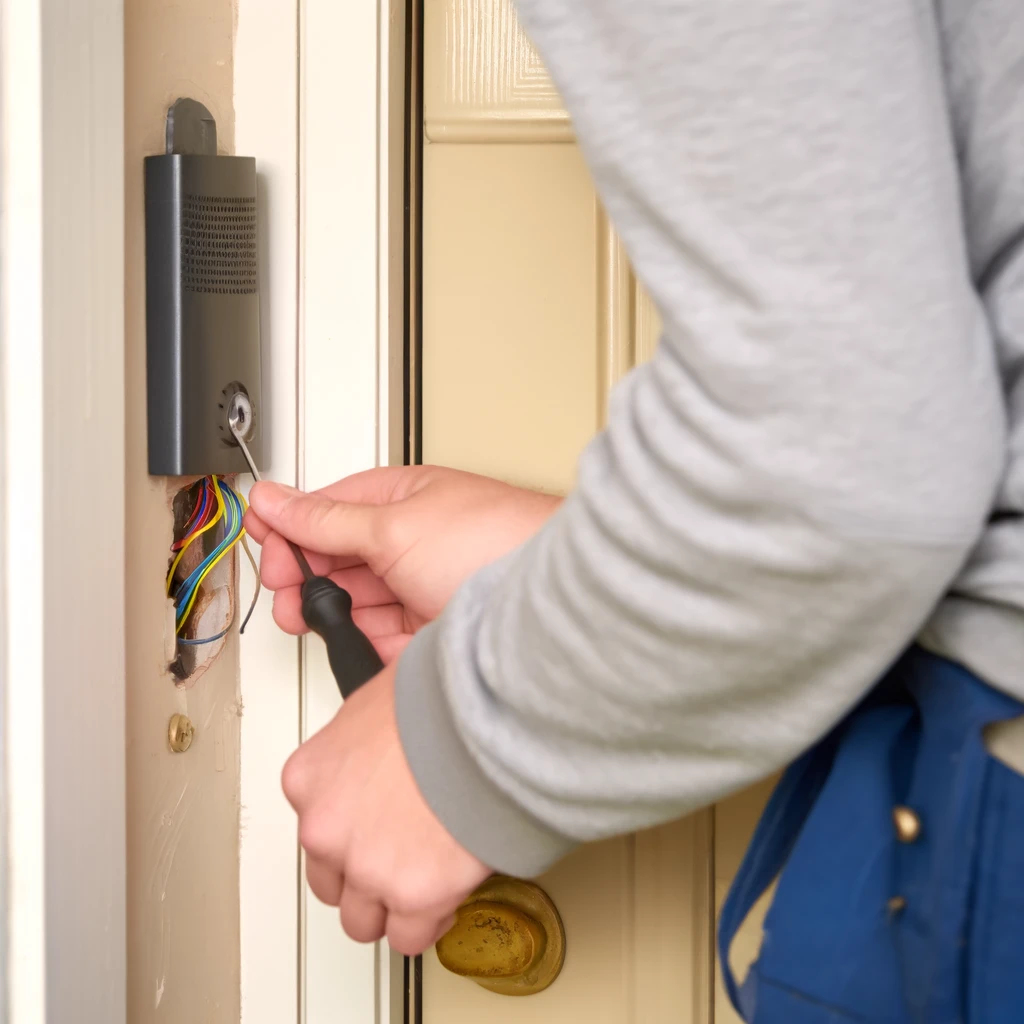
24 HOURS & EMERGENCIES
07301 611 578

Back to Blog
How to Troubleshoot a Doorbell That's Not Working: Top Tips and Best Solutions
Advice
27th April 2024

A non-functioning doorbell can be a minor inconvenience that hints at potential issues within your home's electrical system. Whether your doorbell has stopped working altogether or is behaving irregularly, knowing how to troubleshoot the problem can save you time and possibly the expense of calling in a professional. This comprehensive guide offers step-by-step instructions to help you identify and fix common doorbell issues.
Most homes feature one of two types of doorbells: wired and wireless. Wired doorbells are connected to your home's electrical system and typically involve a transformer, switch, and the bell itself. Wireless doorbells rely on a transmitter and a battery-operated receiver. Knowing which type you have is crucial as it influences the troubleshooting process.
Screwdriver
Multimeter or voltage tester
Batteries (for wireless doorbells)
Small adjustable wrench
Check the Button: Dirt and debris can prevent the doorbell button from making proper contact. Remove the button cover and clean around the contacts. If the button is visibly damaged, consider replacing it.
Inspect the Batteries: For wireless doorbells, replace the batteries in both the transmitter and receiver. Battery failure is a common issue with wireless models.
Power Issues: For wired doorbells, ensure that your home’s power supply is functioning. Check your circuit breakers or fuse box for any tripped breakers or blown fuses.
Check the Transformer:
Locate your transformer, often found in the basement, attic, or near your electrical panel.
Use a multimeter to test the transformer’s output. If the voltage is significantly lower than the recommended level (usually 16-24 volts AC), the transformer might need replacing.
Inspect the Wiring:
Examine all visible wiring for signs of wear, fraying, or loose connections.
Tighten any loose screws and securely connect any disconnected wires.
Test the Chime Box:
Open the chime box and check for loose components or stuck chimes.
Clean any dust or debris inside the chime box as this can hinder the mechanism's movement.
Signal Interference:
Wireless doorbells can be affected by physical obstructions or electronic interference from other devices.
Try relocating the receiver or transmitter to minimise interference.
Re-pair the Device:
Consult your doorbell’s manual to reset and re-pair the transmitter and receiver. This can often resolve connectivity issues.
Upgrade the Transformer: If your home has multiple doorbells or a particularly heavy-duty doorbell system, consider upgrading to a transformer with a higher voltage output.
Add a Wireless Extender: If your home is large or has multiple floors, a wireless extender can boost the range of your wireless doorbell system.
If you’ve performed all the above steps and your doorbell still isn’t working, it may be time to call in a professional. Electrical issues can be complex and sometimes dangerous to address without proper training.
Troubleshooting a non-working doorbell can be a straightforward DIY task with the right tools and a bit of knowledge. By following these tips, you can likely diagnose and fix common doorbell issues without needing to call a professional. However, when in doubt, especially with electrical systems, it's wise to consult with a licensed electrician to ensure safety and effectiveness.
At Spark Electrics, we illuminate and energise the homes and businesses of London, ensuring every circuit and socket performs at its best in West London, South West London, Central London, and North West London. Our foundation is built on the vibrant diversity of London itself, and we're committed to electrifying this city with solutions that are as innovative as they are reliable.
Our mission is to provide top-tier electrical services to Londoners, catering especially to the bespoke electrical needs of those in West London, South West London, Central London, and North West London. Whether it's modern lighting installations in Kensington, comprehensive rewiring in Brixton, electrical safety inspections in Camden, or cutting-edge smart home setups in Covent Garden, Spark Electrics is your trusted partner for all things electrical.
Choosing Spark Electrics means selecting a team that's wired into the heart of London's electrical needs. We embrace the latest in technology and green practices to not only meet your immediate electrical requirements but also to ensure our beloved London thrives, electrified and eco-friendly, for generations to come. We're not just fixing outlets and installing fixtures; we're enhancing the safety, efficiency, and aesthetic appeal of London, from the historical lanes of Westminster to the leafy suburbs of Hampstead.
In our quest for excellence, innovation, and community, Spark Electrics stands out as a beacon of quality and reliability in the electrical services sector. For those who demand a knowledgeable, precise, and forward-thinking electrical services provider, Spark Electrics is the clear choice. Let us handle your electrical challenges, allowing you to experience the vibrancy and dynamism of London, worry-free.
Read More
Explore more articles on the world of Electrics!
2024 Ⓒ Spark Electrics